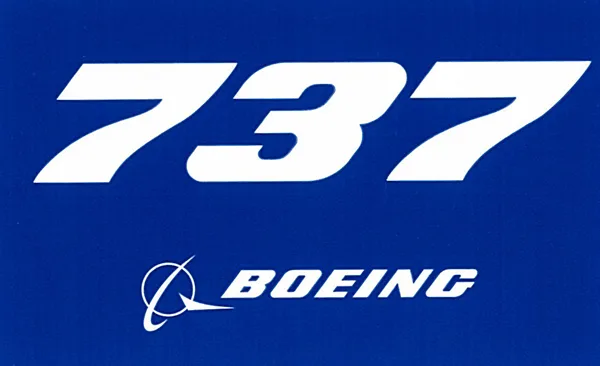
The Boeing 737 is an iconic aircraft, known for its reliability and versatility in the aviation world. Since its introduction, this single-aisle commercial airplane has become a staple in the fleets of many airline customers worldwide. As a cornerstone of Boeing Commercial Airplanes’ offerings, the 737 has seen numerous advancements and updates, particularly with the recent Boeing 737 MAX family. This blog post explores thirteen fascinating facts about the Boeing 737, shedding light on lesser-known aspects of this remarkable aircraft.
13 Fascinating Facts About the Boeing 737
1. The 737 Is Boeing’s Best-Selling Aircraft:
The Boeing 737 is the most ordered and delivered aircraft in Boeing’s history. Its popularity stems from its adaptability, efficiency, and the wide range of models available to meet various airline needs. This aircraft has proven itself time and again as a reliable workhorse for commercial aviation.
2. Initially Designed as a Short-Range Airliner:
Originally, the Boeing 737 was designed for short-haul routes, catering to airlines that needed efficient service between nearby cities. Over time, advancements in technology and design have extended its range, allowing it to serve longer routes and more destinations, making it a favorite among airlines.
3. Unconventional Engine Placement on Early Models:
The first 737 airplanes featured engines mounted on the wings, closer to the fuselage, which was unusual at the time. This design provided better ground clearance and allowed for shorter landing gear, which was particularly useful for operations at smaller airports.
4. The 737 Has Evolved Through Multiple Generations:
The Boeing 737 has undergone significant changes through its various generations. Starting with the original series, it evolved into the generation NG (Next Generation) and most recently, the Boeing 737 MAX family. Each iteration brought improvements in technology, fuel efficiency, and passenger comfort.
5. Versatility in Usage:
Beyond commercial passenger service, the 737 has been adapted for various other uses, including cargo transport and military applications. The Air Force, for example, utilizes a modified version of the 737 for the Airborne Early Warning and Control (AEW&C) role, showcasing the aircraft’s versatility.
6. Record for the Most Flights:
The Boeing 737 fleet has accumulated more flights than any other commercial airplane. This impressive record highlights the aircraft’s reliability and the trust that airline customers place in its performance. The 737’s extensive use also underscores its importance in global air travel.
7. Unmatched Flight Distance:
The combined distance flown by all Boeing 737s is unparalleled, measuring in the millions of nautical miles. This achievement is a testament to the aircraft’s durability and the extensive routes it covers worldwide, from short domestic flights to longer international journeys.
8. Introduction of the Digital Flight Deck:
The generation NG series of the Boeing 737 introduced a digital flight deck, replacing traditional analog gauges with advanced digital displays. This innovation improved pilots‘ situational awareness and streamlined flight operations, setting a new standard in cockpit design for single-aisle aircraft.
9. A Key Training Platform for Pilots:
Due to its prevalence in the aviation industry, the 737 serves as a primary training platform for many pilots. Its widespread use means that flight training on this aircraft type provides pilots with valuable experience that is applicable across many airlines and routes.
10. Advanced Fuel Efficiency in the 737 MAX:
The Boeing 737 MAX family boasts significant improvements in fuel efficiency over previous models. Equipped with the latest engine technology and aerodynamic enhancements, the 737 MAX reduces fuel consumption, making it a cost-effective and environmentally friendly option for airlines.
11. Unique Tail Design:
The 737 features a distinctive T-tail design, which is not commonly found on other commercial airplanes. This design choice helps optimize the aircraft’s aerodynamic performance, particularly in the various configurations and models within the 737 family.
12. Efficient Production Line at Boeing Field:
Boeing’s production line for the 737 at Boeing Field in Seattle is one of the most efficient in the industry. This efficiency allows Boeing to meet high demand and deliver aircraft quickly to airline customers, ensuring that fleets can be updated and expanded as needed.
13. Technological Innovations and Firsts:
Throughout its history, the Boeing 737 has been at the forefront of adopting new technologies. From advanced avionics systems to improvements in structural materials, the 737 has consistently pushed the boundaries of what is possible in a commercial airplane. The 737 MAX, in particular, represents the latest in technological advancements, offering enhanced performance and safety features.
Conclusion
The Boeing 737 is more than just a common sight in airports around the world; it’s a technological wonder that has evolved significantly since it first entered service. Its journey from the early days, with roots in the 707 and 727, to the modern 737 MAX family, showcases Boeing’s commitment to innovation and excellence.
The 737’s enduring success and versatility continue to make it a favorite among airlines and pilots alike. Whether you’re flying on a commercial route or training for your airline transport pilot certification, the Boeing 737 remains a key player in the aviation industry.

